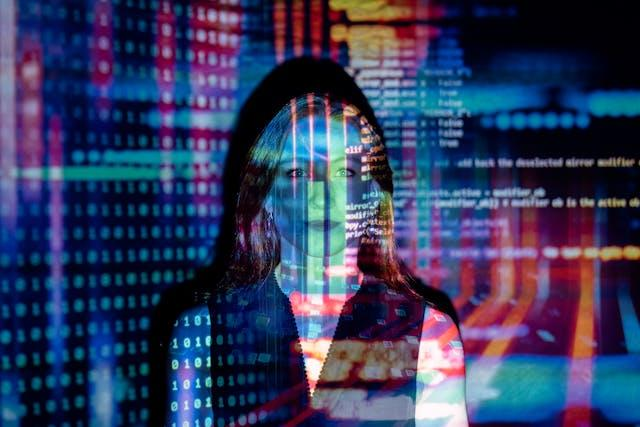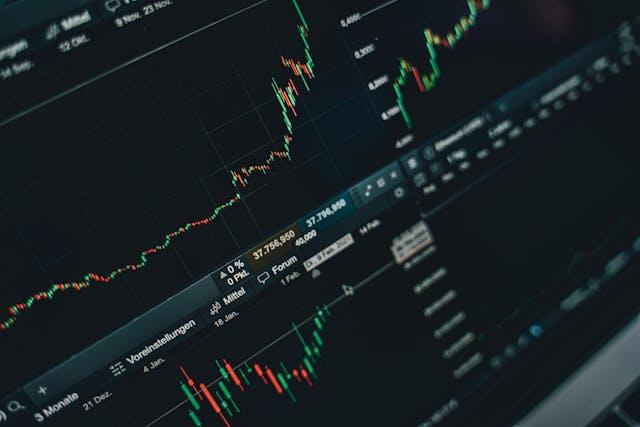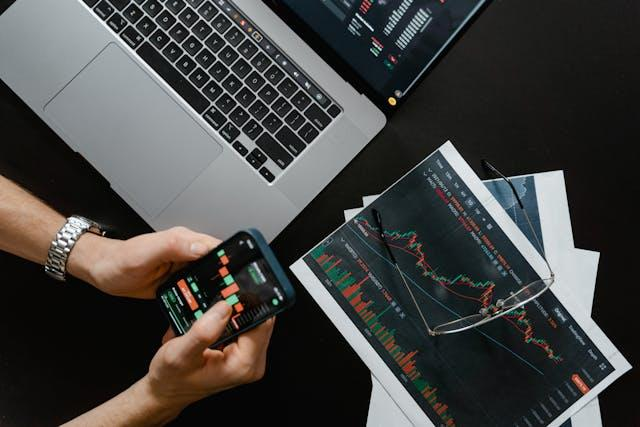
Here’s a quick look at some facts about the currency market: it has a daily trading volume of over $7.5 trillion, which makes it one of the most liquid markets in the world, running 24/5 with constant price swings and extreme volatility. Realistically, you can unlikely manually track everything in that market, analyze trends, and make profitable trades. That’s why traders have always relied on technology to a certain degree, whether that’s charting platforms, trading bots, or anything in between. So, when a significant breakthrough like AI comes along, it’s only natural that it shakes things up. And without overstating it, AI has completely changed the game. In just the last few years, we’ve seen it become a major player in the currency market, spotting patterns, predicting movements, and executing trades with speed and precision no human can match. Knowing all this, let’s break down how AI is used in the currency market to analyze and execute trades.
The Evolution of Forex Trading
Being a successful trader in the currency market has always depended on doing three things really well and fast: charting, analyzing the market, and executing trades. Up until a few years ago, traders generally did these things manually, using platforms like TradingView NinjaTrader, and ThinkorSwim to analyze and chart the markets and MetaTrader 4, MetaTrader 5, and cTrader to place trades. To their credit, these platforms were more than sufficient. They had everything a trader needed, including indicators (both standard and custom), charting tools, and technical analysis features. Moreover, since these platforms are now available to everyday retail traders, what was once exclusive to hedge funds and major financial institutions is now accessible to everyone.
One of the biggest shifts has been in charting and market analysis. Platforms for market analysis have moved beyond interactive price charts. They now offer AI-powered indicators, predictive analytics, and automated scripts that recognize patterns. This makes perfect sense because the advantage of AI isn’t just relying on historical price action, it leverages big data, machine learning, and advanced algorithms to predict market movements with mathematical precision.
The process of trade execution has also evolved. It used to be entirely manual, requiring traders to react in real time to price movements. Now, AI-powered systems can place trades within milliseconds, reacting to market changes far faster than any human could. Whether it's automated order placement, risk management, or high-frequency trading, AI ensures trades are executed at optimal prices with minimal delay.

AI in Currency Market Analysis
Instead of relying on instinct or outdated indicators, AI has made it possible for traders to analyze markets as easily as snapping a finger. Here is how AI is being applied to market analysis:
1. Big Data Processing
The speed at which price actions occur is incredible, and a lot of factors can affect it, for example, macroeconomic indicators, economic reports, global news, and even market sentiment. AI is able to process all this data (collectively referred to as big data) in a matter of seconds, giving traders a clear picture of what’s happening in the market. What’s more, this is faster and more accurate than doing it by hand.
2. Machine Learning Models
It’s fascinating that AI can process a huge amount of data quickly. Another major capability is its ability to learn from the data it processes. How? Experts use supervised learning to help predict price movements based on historical trends, while unsupervised learning picks up on hidden patterns and anomalies that most human traders wouldn’t even notice.
3. Natural Language Processing (NLP)
There are millions of news articles, central bank speeches, and even social media posts that can affect how the currency market behaves, and it’s impossible to go through each and every one of them before placing a trade. But AI can. This technology is able to scan and analyze language from various sources, even in real time, to provide insigo the market.
AI-Powered Trading Strategies
One of the biggest differences between profitable traders and those who aren’t is that profitable traders usually place the right trade at the right time. But it’s becoming harder to do that, especially as the currency markets become more volatile and the economy becomes more unstable. So, executing trades manually doesn’t cut it anymore. Here’s how AI is being applied to how trades are placed, opti:ized, and executed:
1. Algorithmic Trading
Speed and precision are everything in the forex market. That’s where algorithmic trading comes in, it uses AI-driven algorithms to analyze market conditions and executs within milliseconds. By removing emotions from the equation, it ensures trades are made based on pure data and logic, seizing opportunities that human traders would likely miss.
2. High-Frequency Trading (HFT)
A microsecond might not mean much in day-to-day life, but even the most minor price inefficiency in trading can create an opportunity. When trades are placed manually, these tiny gaps often go unnoticed. But AI-powered bots can scan order books, detect arbitrage opportunities, and execute thousands of trades in a fraction of a second. This process, known as high-frequency trading, allows AI to capitalize on market inefficiencies at a speed no human trader could ever match.
3. Sentiment Analysis-Based Trading
Numbers don’t just move markets; psychology plays a huge role. AI analyzes financial news, social media, and central bank statements to gauge market sentiment, helping traders anticipate moves and even place trades before they appear on the charts.
4. Reinforcement Learning for Strategy Optimization
It’s normal for traders to change their strategies and approach to the market over time. AI does the same thing, but 10 times better. How? It learns from past experiences, not just from one trader but often from hundreds of thousands. This means AI continuously tests, adjusts, and improves trading strategies, making its decision-making more refined with every trade.

AI Is the Way Forward in Forex
The forex market isn’t what it used to be, and traders who aren’t adapting are already falling behind. AI has taken over everything from market analysis to trade execution, making trading faster, smarter, and more precise. Whether it’s deep learning for pattern recognition, sentiment analysis for market shifts, or high-frequency trading for split-second executions, AI is now at the core of modern trading.







